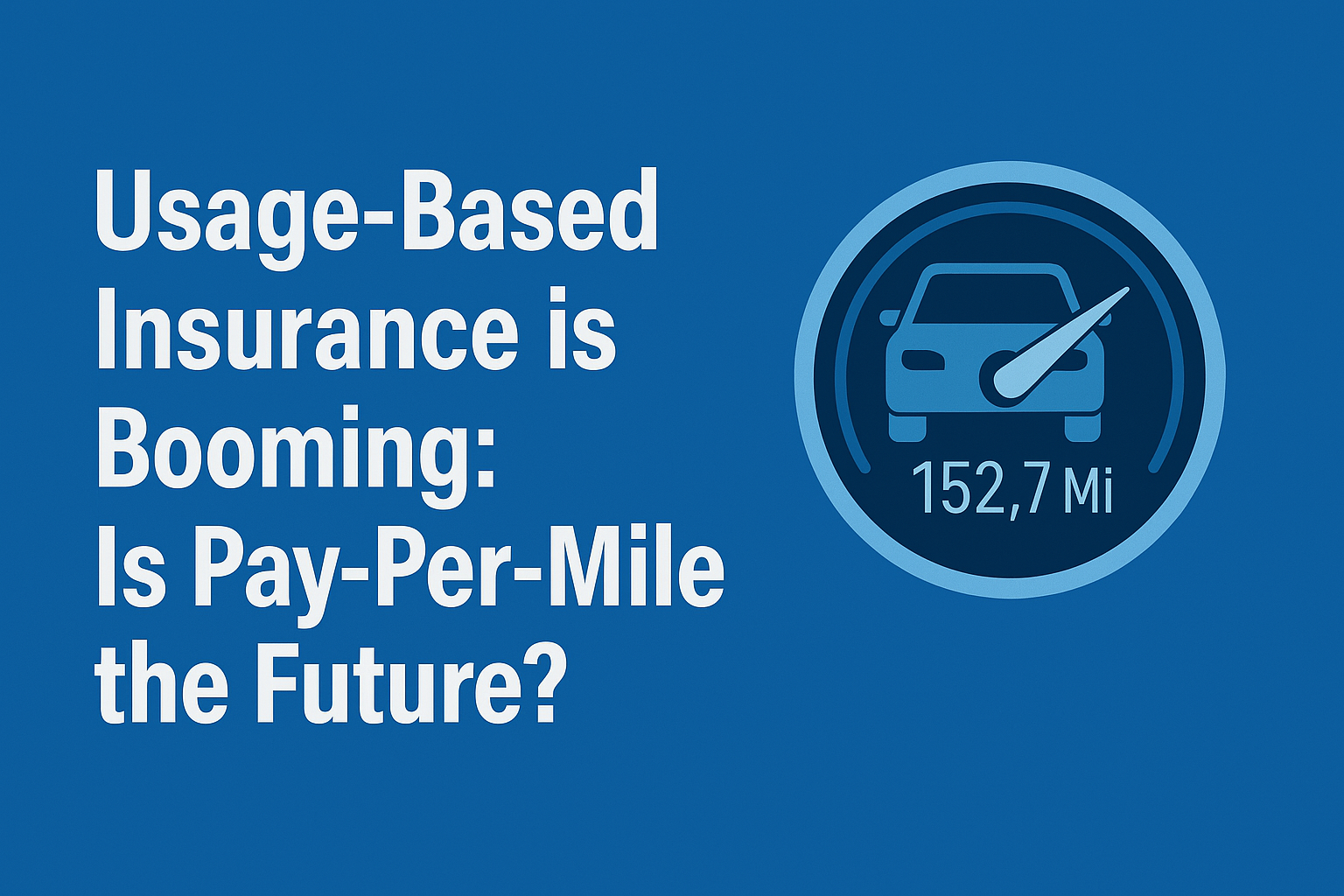
In 2025, the traditional “one-size-fits-all” car insurance model is rapidly losing ground. Replacing it is a smarter, fairer option: usage-based insurance (UBI)—a system where what you pay is directly tied to how much and how well you drive.
As inflation, remote work, and shifting driving habits change the landscape, UBI is gaining momentum, and pay-per-mile insurance is leading the charge. But is it just a trend, or the future of auto insurance?
⸻
1. What Is Usage-Based Insurance (UBI)?
UBI uses telematics—small devices or smartphone apps—to track how far you drive, your driving behaviors (like speeding, braking, and acceleration), and even what time of day you’re on the road. This data helps insurers personalize your rate based on actual risk, not generic assumptions.
There are two main models:
• Pay-as-you-drive (PAYD): Charges based on total mileage
• Pay-how-you-drive (PHYD): Charges based on driving habits and behavior
⸻
2. Why UBI Is Gaining Ground in 2025
Remote work and hybrid schedules have significantly reduced daily commutes. Many drivers now travel fewer miles per year—yet still pay the same high premiums as heavy drivers. UBI solves that by offering fairer rates for low-mileage drivers.
Key Stat: A 2025 report by JD Power found that 42% of U.S. drivers would switch insurers if offered a pay-per-mile plan.
⸻
3. Who’s Leading the UBI Market?
Insurtech startups like Metromile, Root, and Mile Auto were early adopters of the model. Now, even legacy insurers are getting onboard:
• Allstate’s Drivewise offers significant discounts for safe drivers
• Progressive’s Snapshot tracks both mileage and behavior
• Liberty Mutual and State Farm have launched new UBI options in 20+ states
These programs are now embedded into mobile apps, with real-time dashboards and personalized feedback.
⸻
4. The Pros and Cons of Pay-Per-Mile Insurance
Pros:
• Fairer pricing for low-mileage and safe drivers
• Real-time driving insights to improve behavior
• Transparent data-based discounts
Cons:
• Privacy concerns over data sharing
• Rates may spike for frequent, risky, or night-time drivers
• May not benefit long-distance commuters
⸻
5. Is UBI the Future—or Just a Niche?
Analysts believe UBI will account for 25–30% of the personal auto insurance market by 2028, especially as EV adoption and urban living reduce average vehicle usage. Telematics data also helps insurers manage claims faster and detect fraud more efficiently.
Still, regulatory concerns and data ethics must be addressed. For now, UBI works best for low-mileage, safe, tech-savvy drivers—but as acceptance grows, it could become the default model of auto insurance.
⸻
Final Thoughts: Drive Less, Pay Less
In 2025, usage-based insurance is no longer a fringe concept—it’s a rising alternative that promises fairness, transparency, and personalization. As mobility habits evolve, UBI is positioning itself not just as a product—but as the future standard in auto insurance.
So if you’re driving less, maybe it’s time your premium does too.